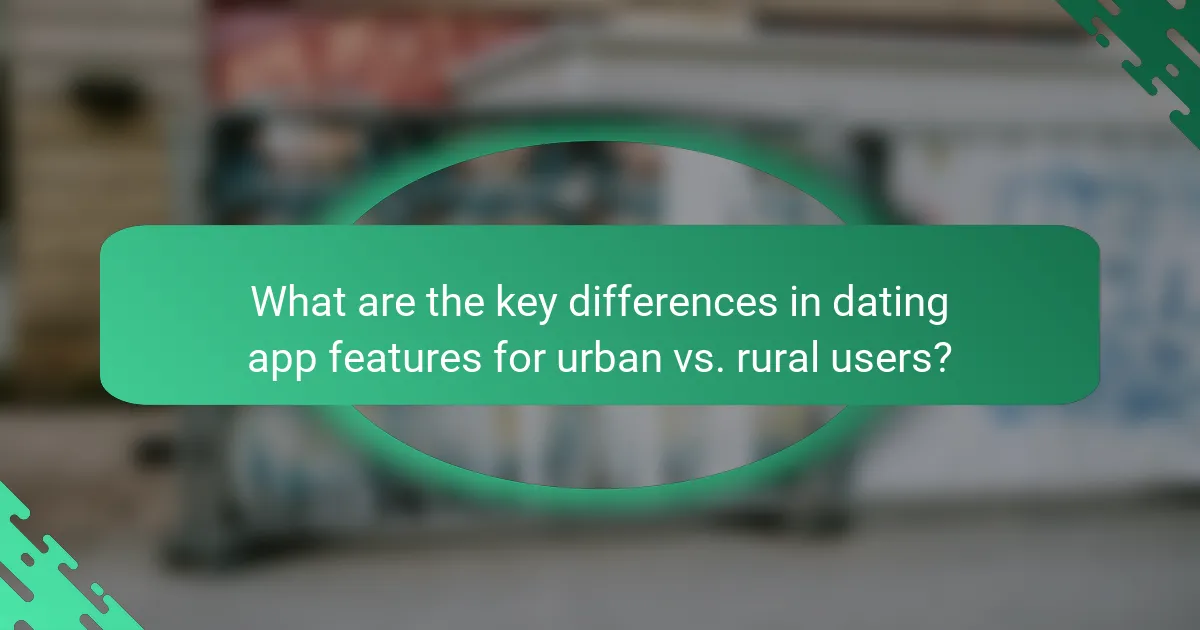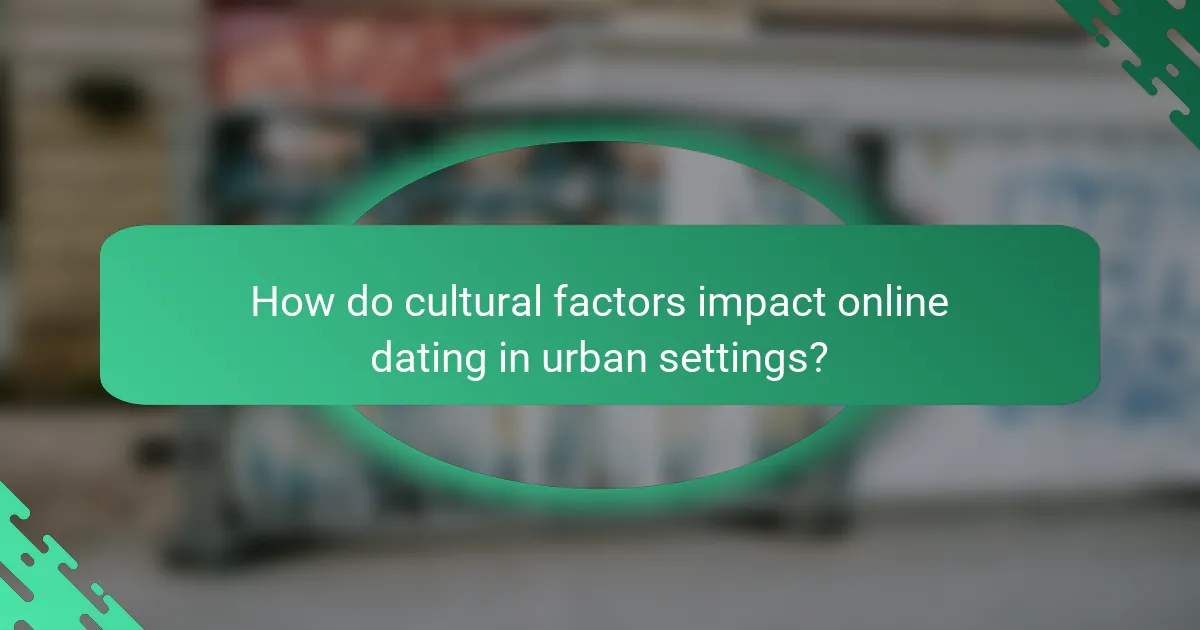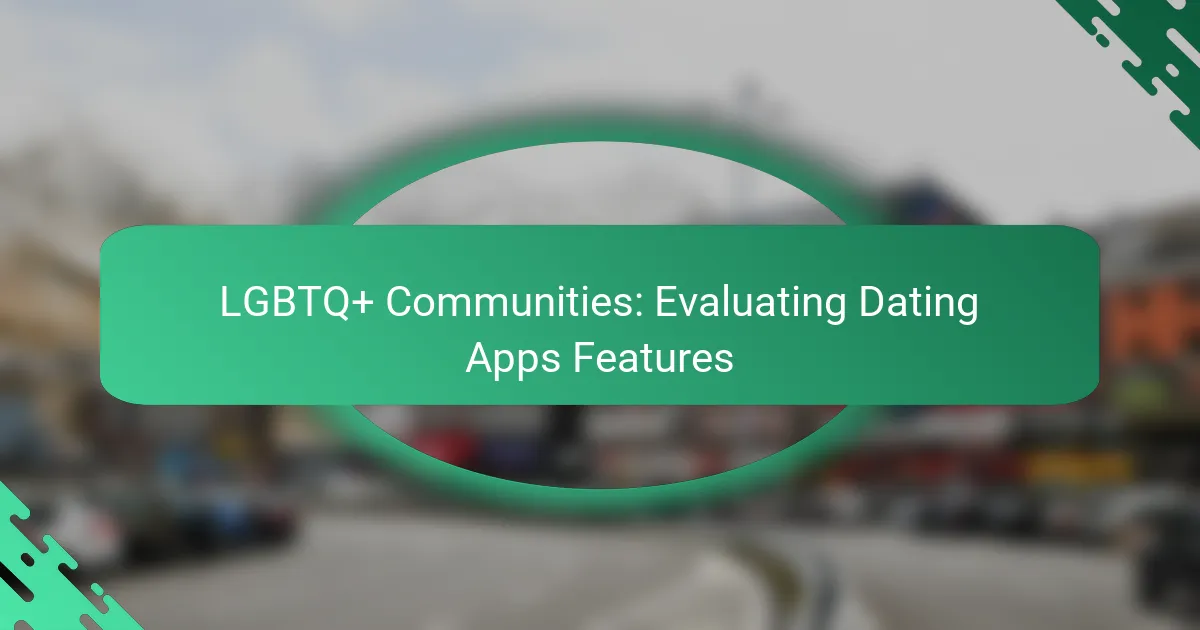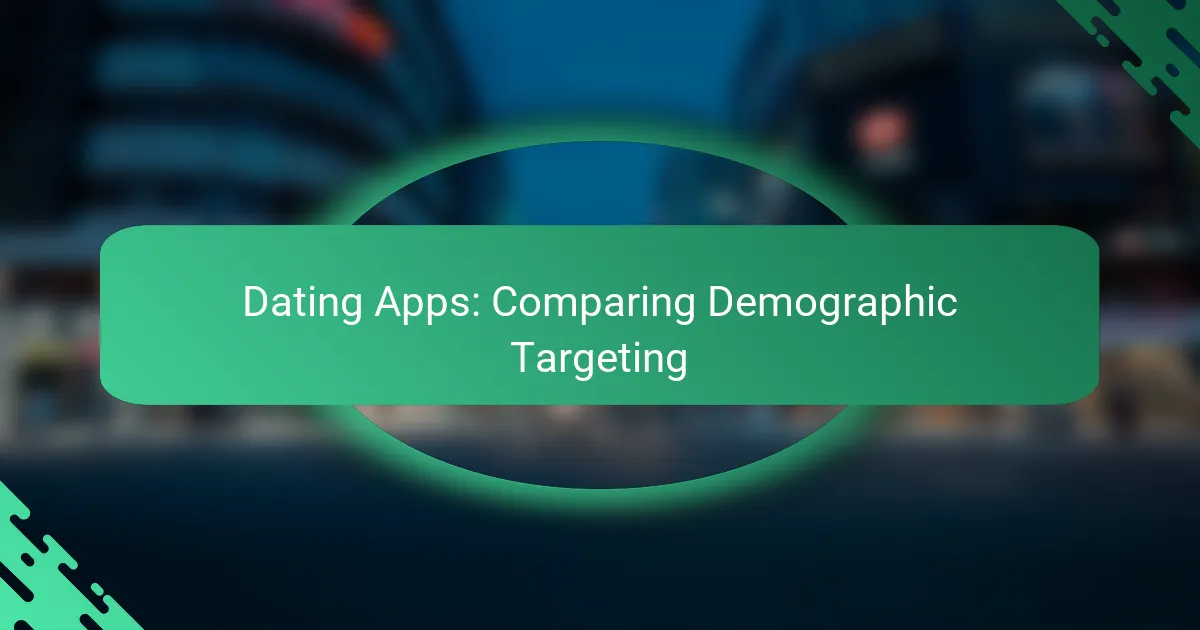The preferences of urban and rural individuals play a crucial role in shaping their online dating experiences. In urban settings, users often seek fast-paced connections that match their dynamic lifestyles, while rural preferences are influenced by community values and a focus on long-term relationships. These differing approaches highlight how location and demographics impact the way people engage with dating platforms.

How do urban preferences shape online dating experiences?
Urban preferences significantly influence online dating experiences by fostering a more dynamic and diverse environment. In cities, users often seek connections that reflect their fast-paced lifestyles and varied social opportunities.
Higher engagement on dating apps
Urban dwellers typically exhibit higher engagement on dating apps compared to their rural counterparts. This increased activity can be attributed to the greater availability of potential matches and a culture that embraces digital interactions. Users in cities often spend more time swiping and messaging, leading to quicker connections.
Moreover, urban dating apps may feature more frequent updates and events, keeping users engaged and encouraging them to explore new connections. This can result in a more vibrant dating scene, where users are motivated to participate actively.
Focus on diverse social activities
In urban areas, online dating often emphasizes a wide range of social activities, catering to various interests and lifestyles. Users are likely to seek partners who share their enthusiasm for events such as concerts, art exhibitions, or food festivals. This diversity allows for more engaging and meaningful interactions.
Additionally, urban dating profiles frequently highlight interests in local events and activities, making it easier for users to find common ground. This focus on shared experiences can enhance compatibility and foster deeper connections.
Preference for casual dating
Casual dating tends to be more prevalent in urban settings, where individuals may prioritize flexibility and exploration over long-term commitments. Many urban daters appreciate the opportunity to meet new people without the pressure of immediate relationship expectations.
This preference for casual encounters is often reflected in the design of dating apps, which may offer features specifically tailored for short-term connections. Users are encouraged to communicate openly about their intentions, making it easier to navigate the dating landscape.

What influences rural dating preferences?
Rural dating preferences are shaped by factors such as community values, relationship goals, and the availability of potential partners. These influences often lead to a focus on long-term commitments and a unique approach to matchmaking.
Emphasis on long-term relationships
In rural areas, there is typically a stronger emphasis on long-term relationships compared to urban settings. Many individuals seek partners for serious commitments, often viewing dating as a pathway to marriage or family. This mindset can lead to more meaningful connections, as both parties are usually aligned in their relationship goals.
For example, rural daters might prioritize compatibility in values and lifestyle over casual dating experiences. This focus can foster deeper emotional bonds, as partners often share similar backgrounds and community ties.
Limited dating pool
The dating pool in rural areas is often smaller, which can significantly influence preferences and experiences. With fewer singles available, individuals may need to broaden their criteria for potential partners. This limitation can encourage people to consider relationships with those they might not have initially chosen.
Moreover, the close-knit nature of rural communities means that many individuals already know each other, which can complicate dating dynamics. People may feel pressure to maintain social harmony, leading to cautious approaches in dating.
Community-based matchmaking
Community-based matchmaking plays a vital role in rural dating preferences. Many individuals rely on family and friends to introduce them to potential partners, leveraging existing social networks. This method can enhance trust and familiarity, making it easier to form connections.
Additionally, local events such as fairs, festivals, and community gatherings often serve as informal matchmaking opportunities. Attending these events can help singles meet others in a relaxed environment, fostering organic interactions that might lead to lasting relationships.

How do location and demographics affect dating app usage?
Location and demographics significantly influence how individuals engage with dating apps. Urban dwellers tend to prefer app-based dating due to convenience and a larger pool of potential matches, while those in rural areas often rely on traditional methods like community events and personal introductions.
Urban areas favor app-based dating
In urban environments, dating apps are popular because they offer quick access to a diverse range of potential partners. With busy lifestyles, many city residents appreciate the efficiency of swiping and messaging, which allows them to connect without the need for in-person meetings right away.
Urban dating apps often include features like location-based matching and event suggestions, enhancing user experience. For example, apps may recommend local singles events or social gatherings, making it easier for users to meet in person after initial online interactions.
Rural areas prefer traditional methods
In contrast, individuals in rural areas tend to favor traditional dating methods. Limited access to high-speed internet and a smaller dating pool can make app usage less appealing. Many rural residents find it easier to meet potential partners through local community events, social gatherings, or mutual acquaintances.
Moreover, the close-knit nature of rural communities often means that people prefer to establish relationships through face-to-face interactions. This can lead to stronger connections built on shared experiences and mutual understanding, which are sometimes lacking in app-based dating scenarios.

What are the key differences in dating app features for urban vs. rural users?
Urban and rural users experience distinct features on dating apps, shaped by their environments. Urban apps often prioritize speed and convenience, while rural apps focus on deeper compatibility and shared values.
Urban apps focus on quick matches
In urban areas, dating apps are designed for fast-paced lifestyles, allowing users to make quick connections. Features such as swipe-based matching and location-based filters enable users to find potential partners within minutes.
Urban apps often include functionalities like instant messaging and event recommendations, catering to users who prefer spontaneous meetups. For example, apps may suggest nearby bars or social events where users can connect in real-time.
Rural apps highlight compatibility and values
Rural dating apps emphasize meaningful connections, often incorporating detailed profiles that highlight users’ interests and values. This approach helps users find partners who share similar lifestyles and long-term goals, which is crucial in less populated areas.
Many rural apps include features like personality assessments or compatibility quizzes to facilitate deeper matches. Users may also find options for community engagement, such as local events or group activities, which foster connections beyond the app.

How do cultural factors impact online dating in urban settings?
Cultural factors significantly influence online dating experiences in urban areas by shaping preferences and expectations. Urban environments often feature diverse populations, leading to a variety of dating norms and practices that can affect how individuals connect and interact online.
Diverse cultural backgrounds
Urban settings are typically characterized by a mix of cultural backgrounds, which enriches the online dating landscape. Users may encounter partners from various ethnicities, religions, and lifestyles, broadening their dating options. This diversity can lead to unique challenges, such as navigating different cultural expectations and communication styles.
For instance, someone from a collectivist culture may prioritize family approval in dating, while another from an individualistic background may focus on personal choice. Understanding these differences can enhance compatibility and foster meaningful connections.
Acceptance of non-traditional relationships
In urban areas, there is often a greater acceptance of non-traditional relationships, such as [censured], [censured] partnerships, and casual dating. This openness allows individuals to explore various relationship structures without facing significant societal backlash. Online dating platforms frequently cater to these diverse preferences, offering features that support different relationship types.
However, it’s crucial for users to communicate their relationship expectations clearly to avoid misunderstandings. Engaging in open discussions about relationship goals can help align partners’ intentions and enhance the overall dating experience.

What role does technology play in urban vs. rural dating?
Technology significantly influences dating experiences in urban and rural areas, primarily through the platforms and devices used. Urban daters tend to favor mobile technology for convenience, while rural individuals often rely on desktop platforms due to limited mobile connectivity.
Urban reliance on mobile technology
In urban settings, mobile technology is the primary means of engaging in online dating. Apps like Tinder and Bumble are popular due to their accessibility and user-friendly interfaces, allowing users to connect quickly while on the go. Urban daters often appreciate features like location-based matching, which enhances the likelihood of meeting nearby singles.
Additionally, the fast-paced lifestyle in cities encourages the use of mobile devices for dating. Users can swipe through profiles during commutes or breaks, making it easier to integrate dating into their busy schedules. However, this reliance on mobile technology can lead to superficial connections if users prioritize quick matches over meaningful interactions.
Rural use of desktop platforms
In contrast, rural daters frequently turn to desktop platforms for their online dating needs. Limited mobile service in remote areas often makes desktop computers the more reliable option for accessing dating sites. Websites like Match.com or eHarmony are commonly used, as they provide more comprehensive profiles and detailed search options.
Rural users may benefit from the slower pace of life, allowing them to invest more time in crafting thoughtful profiles and engaging in deeper conversations. However, the challenge remains in finding matches, as the smaller population can limit options. It’s essential for rural daters to be open to long-distance connections, which can expand their dating pool significantly.

How do safety concerns differ between urban and rural online dating?
Safety concerns in online dating vary significantly between urban and rural areas, primarily due to differences in anonymity and community dynamics. Urban users often face higher risks of harassment and crime, leading them to prioritize anonymity, while rural users may deal with close-knit communities that can complicate privacy and safety.
Urban users prioritize anonymity
In urban settings, online daters frequently emphasize the need for anonymity to protect themselves from potential threats. The dense population and higher crime rates can make individuals more cautious about revealing personal information. Many urban users opt for dating apps that allow them to maintain a level of privacy, such as using pseudonyms or limiting profile visibility.
Additionally, urban daters often engage in safety practices like meeting in public places and sharing their location with friends during dates. This approach helps mitigate risks associated with meeting strangers, ensuring that they have a support system in place should anything go wrong.
Rural users face community scrutiny
In contrast, rural online daters often encounter challenges related to community scrutiny. The smaller population means that individuals may know each other or have mutual acquaintances, which can lead to concerns about reputation and privacy. This dynamic can discourage some from pursuing online dating altogether, fearing judgment or gossip.
Rural users may also be more inclined to use dating platforms that emphasize local connections, as these can help them find matches within their community while still maintaining some level of discretion. However, they must balance the desire for connection with the need for privacy, often leading to cautious engagement in online dating.



